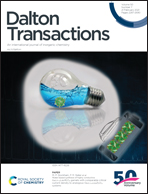Stable supercapacitor electrode based on two-dimensional high nucleus silver nano-clusters as a green energy source†
Abstract
Atomically precise silver nanoclusters (Ag-NCs) are known as a hot research area owing to their brilliant features and they have attracted an immense amount of research attention over the last year. There is a lack of sufficient understanding about the Ag-NC synthesis mechanisms that result in optimal silver nanoclusters with an appropriate size, shape, and morphology. In addition, the coexisting flexible coordination of silver ions, the argentophilic interactions, and coordination bonds result in a high level of sophistication in the self-assembly process. Furthermore, the expansion of clusters by the organic ligand to form a high dimensional structure could be very interesting and useful for novel applications in particular. In this study, a novel two-dimensional 14-nucleus silver poly-cluster was designed and synthesized by the combination of two synthetic methods. The high nucleus silver cluster units are connected together via tetradecafluoroazelaic acid (CF2) and this leads to the high stability of the polymer. This highly stable conductive poly-cluster, with bridging groups of difluoromethylene, displays a high energy density (372 F g−1 at 4.5 A g−1), excellent cycling stability, and great capacity. This nanocluster shows a high power density and long cycle life over 6000 cycles (95%) and can also tolerate a wide range of scan rates (5 mV s−1 to 1 V s−1), meaning it could act as a green energy source.



 Please wait while we load your content...
Please wait while we load your content...